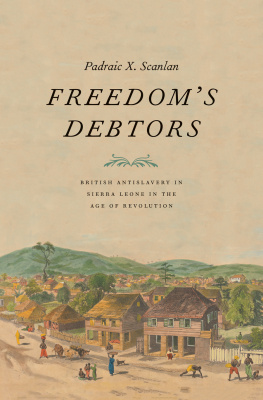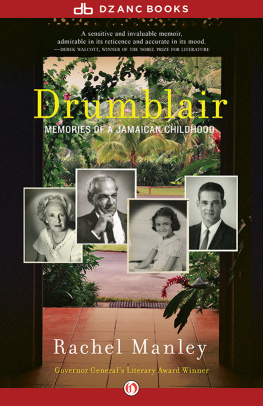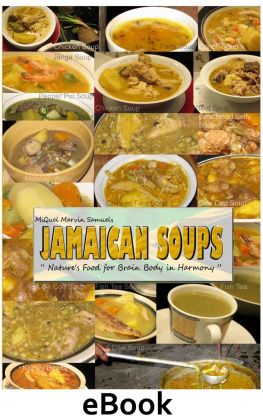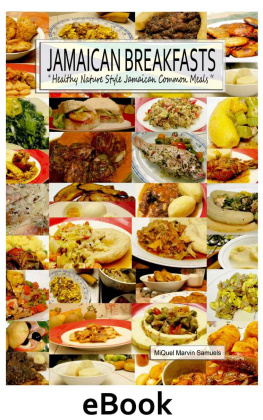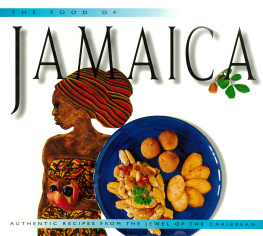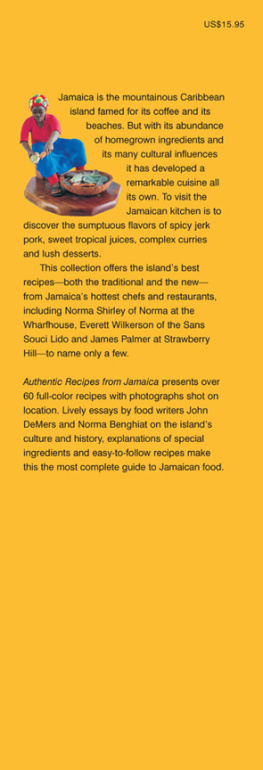FREEDOMS CHILDREN
2014 THE UNIVERSITY OF NORTH CAROLINA PRESS
All rights reserved. Manufactured in the United States of America. Designed by Sally Scruggs and set in Charter by codeMantra.
The paper in this book meets the guidelines for permanence and durability of the Committee on Production Guidelines for Book Longevity of the Council on Library Resources.
The University of North Carolina Press has been a member of the Green Press Initiative since 2003.
Library of Congress Cataloging-in-Publication Data
Palmer, Colin A., 1944 Freedoms children : the 1938 labor rebellion and the birth of modern Jamaica / Colin A. Palmer.
pages cm
Includes bibliographical references and index.
ISBN 978-1-4696-1169-3 (pbk : alk. paper)
1. JamaicaPolitics and governmentTo 1962. 2. Labor JamaicaHistory20th century. 3. Labor unionsPolitical activity JamaicaHistory20th century. 4. JamaicaHistoryTo 1962. I. Title.
F 1886. P 35 2014
320.972920904dc23
2013028648
18 17 16 15 14 5 4 3 2 1
CONTENTS
Jamaican Currency in 1938
ILLUSTRATIONS, TABLES, AND MAP
Illustrations
Norman Manley, ca. 1938 |
Alexander Bustamante and striking workers, June 1, 1938 |
Tables
1. Population Classified by Racial Origin and Sex Showing Numerical and Percent Distribution, 1943 |
2. Percentage Distribution of Certain Racial Origin Groups, Jamaica, 18811943 |
3. Racial Origins and Literacy, Seven Years of Age and Older, 1943 |
4. Gross Annual Incomes in Jamaica, 1935 |
5. Ordinary Workers Estimated Monthly Minimum Budget |
6. Distribution of Landholdings, 1938 |
7. The West Indies Sugar Company, Ltd., Scale of Pay Prior to May 3, 1938 |
8. The West Indies Sugar Company, Ltd., Cultivation Rates |
9. Membership of Unions in Jamaica, 1943 |
Map
Jamaica |
ACKNOWLEDGMENTS
I would like to thank several persons for their kind assistance as I conducted the research for this book. The staffs of the Jamaica Archives; the Institute of Jamaica; the National Archives in College Park, Maryland; the British Archives; and the Schomburg Center for Research in Black Culture deserve my gratitude. Nora Strudwich of the Bustamante Museum was particularly helpful. I also want to thank Jobert Bienvenue and Maristela Perez for typing the manuscript. My good friends and colleagues Franklin Knight, Patrick Bryan, Nicole Burrowes-Caserly, and Sean Greene read the entire manuscript and provided me with trenchant criticisms and useful suggestions for its improvement. The manuscript also benefited enormously from the criticisms of the two readers for the University of North Carolina Press. I thank these six scholars for their selfless and priceless contributions to the preparation of this volume.
JAMAICAN CURRENCY IN 1938
1 farthing (1/4d) = lowest denomination
4 farthings = 1 penny (1d)
6 farthings = 1 penny and a half (1 )
12 pennies = 1 shilling (1/)
18 pennies = one shilling and sixpence (1/6)
4 shillings = 1 dollar
20 shillings = 1 pound ()
INTRODUCTION
This book is the third in a series that began with the publication in 2006 of Eric Williams and the Making of the Modern Caribbean. That volume was primarily a study of the important role that the brilliant scholar and statesman from Trinidad and Tobago played in imagining and working to construct a politically and economically integrated Anglophone Caribbean. Williams was the most outstanding personage that his country produced in the twentieth century, serving as head of its government from 1956 to 1981. The book was, in a larger sense, also a study of Trinidad and Tobagos quest for self-determination and Williamss attempts to call a new and modern Caribbean into being.
Published in 2010, the second volume in the trilogy examined British Guianas tumultuous struggle to achieve nationhood. The Guyanese nation in formation was damaged by the corrosive politics of race, the self-serving and destructive machinations of the British and the Americans, and the mediocrity of its elected leaders. Entitled The Politics of Power: Cheddi Jagan and the Struggle for British Guianas Independence, the book was a case study of a colonial tragedy.
More positive in tone, this volume is concerned with the labor rebellion that occurred in Jamaica in 1938 and how it helped to create a new polity. Beginning in the mid-1930s, workers in many colonies of the Anglophone Caribbean rejected the appalling conditions that had imprisoned them, challenging an oppressive status quo. Predominantly of African descent, these descendants of enslaved peoples did not experience a fundamental change in their life chances since the abolition of slavery in 1838. The worldwide economic depression of the 1930s exacerbated their dire circumstances, and so would World War II. Jamaican workers were no strangers to abuse, exploitation, and economic deprivation. But some of them were starting to realize their collective power and their ability to force the barons of capital to change, or at least to alter, the texture of their relationship with labor.
This is the story of Jamaican workers who forged a class consciousness in contestation with capital. Workers began to draw psychological strength and energy from one another, despite their variegated jobs, skills, age, gender, and residential location. This book describes the dynamism that emanated from below and discusses the social unrest that engulfed the island in May and June of that fateful year, 1938. Neither the colonial state nor the elite groups were prepared for the ubiquity of these challenges to the status quo, their fervor, and their frightening urgency. They began on the West Indies Sugar Companys estate in Frome on May 2, 1938, spreading to Kingstons waterfront and elsewhere three weeks later. These streams of protest were the result of numerous tributaries of discontent that had been eroding the islands workplaces, awaiting the moment when they would coalesce into one mighty river.
This spontaneous outpouring of discontent initially lacked leadership, direction, strategy, or even a coherent series of objectives. The workers inchoate but passionate and irrepressible demands for change could not be contained, tempered, ignored, or diverted. Although a modern trade union, the Jamaica Workers and Tradesmen Union, had been founded a year earlier by Allan George St. Claver Coombs, the workers did not consult him before they began their strikes. Coombs had invited a self-identified wealthy man and usurer to assist him in the union, but the relationship was acrimonious and short-lived. William Alexander Bustamante, a charismatic personality, had no experience as a labor leader before he enlisted with Coombs, but he would develop into the most celebrated trade unionist that Jamaica has produced.
Born William Alexander Clarke in Blenheim in the parish of Hanover in 1884, he formally changed his surname to Bustamante in 1944 after using that name for a decade or more. Of mixed racial ancestry, young Clarke received an elementary school education. He migrated to Cuba in 1905, joining the ranks of many thousands of Jamaicans seeking their fortunes in that island. Clarke worked as a tramway operator in Cuba before relocating to Panama. He returned to Cuba either in 1919 or 1920, procuring a job with the Special Police Force. Clarke visited Jamaica three times between 1922 and 1932, eventually settling in New York, where he obtained a job in a hospital, probably as an attendant.
Clarkes/Bustamantes overseas sojourns are shrouded in mystery. The veracity of the narrative he recounted when he returned to Jamaica cannot be established, as he invented and reinvented his past. Bustamante claimed that he made a fortune in the stock market in the United States of America, but there is no independent corroboration of his story. Returning to Jamaica permanently in 1934, he became a usurer with a mostly impoverished clientele.



